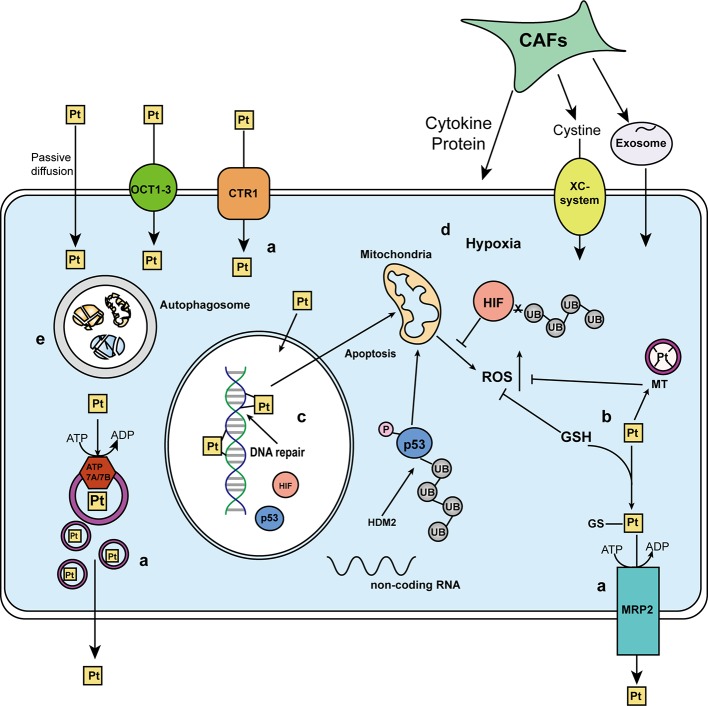Figure 2.
A schematic of the mechanisms affecting platinum response. The response toward platinum-based antitumor agents can result from (a) cellular drug accumulation. Besides passive diffusion, the uptake of platinum agents is mediated by multiple transporters. Organic cation transporters (OCT1-3) and CTR1 mediated the influx, while ATP7A/7B and MRP2 participate in the isolation and efflux of platinum agents or GS-platinum complex. (b) Detoxification system. Platinum agents can be deactivated by binding to detoxification components, glutathione (GSH) and metallothionein (MT). (c) DNA repair process. The platinum atom can covalently bound to the N7 positions of purine bases to form the platinum-DNA adducts and induce cytotoxicity, but the DNA repair process could repair the damaged DNA lesion. (d) Apoptosis. Once the DNA repair fails or is overwhelmed by too many DNA lesions, apoptosis will be triggered. Mitochondria will generate excessed reactive oxygen species (ROS) to kill the cells, which might be neutralized by GSH and MT. p53 and tumor microenvironment [including hypoxia-induced hypoxia-inducible factor (HIF) and cancer-associated fibroblasts (CAFs)] play key regulatory roles in apoptosis. (e) Autophagy, a self-digestion process, has two sides in affecting platinum response.

